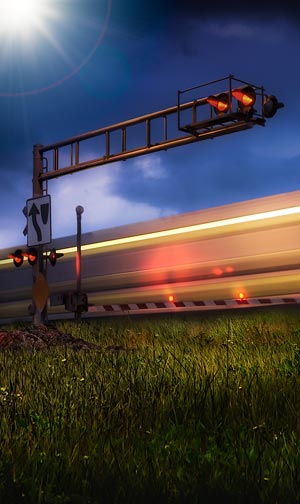(West Jordan, Utah – June 10, 2011)
As a western Salt Lake City community, still numbed by the tragic death of a teenager at the outset of summer vacation, searches for answers to the UTA TRAX light rail grade crossing accident that killed her, facts and admissions of responsibility continue to become unveiled.
A Utah Transportation Authority Spokesman, Communication Director Gerry Carpenter, admitted Friday issues related to the grade crossing’s design may have been partially responsible “There are some site visibility issues,” Carpenter told SLC’s Deseret News.
Sharaiah Casper, 15, died Wednesday afternoon when, according to the UTA spokesman “An eastbound test train (actual rail service will not begin until August) traveling at 45 mph crossed the road. That train would likely have been more visible from the girls’ position than the westbound train that followed 6 seconds later.”
After passage of the first train, the girls began to cross, only to have the westbound train, travelling at 40 mph, strike and kill Casper, with her cousin escaping injury by inches. The UTA spokesman continued that “The girls may have never seen the second train or at least saw it too late. There was no gates at the pedestrian crossing and a sound wall built to protect nearby residents from the constant sound of the trains could have made it hard for them to see the westbound train in time.” The wall is 15 feet high and begins only a few feet from the sidewalk where the two girls were waiting.
“Another visibility issue is that the tracks cross 3200 West at about a 10-degree angle,” Carpenter told the Deseret News. “That angle (a 100 degree, obtuse angle) would make it easier for pedestrians from the girls’ position to see eastbound trains, but harder to see westbound ones.” In addition, a power pole also blocks the view of westbound trains. The pole abuts the sound wall within the TRAX right-of-way corridor, and is also only a few feet from the sidewalk. “A pedestrian would have to see past both the sound wall and the power pole to view any westbound train,” the newspaper concluded.
“The sound wall, or something similar, is required by federal regulations,” added Carpenter, since the Trans-Jordan line is being built with 80% federal funding, ‘sound mitigation’ is required.”


